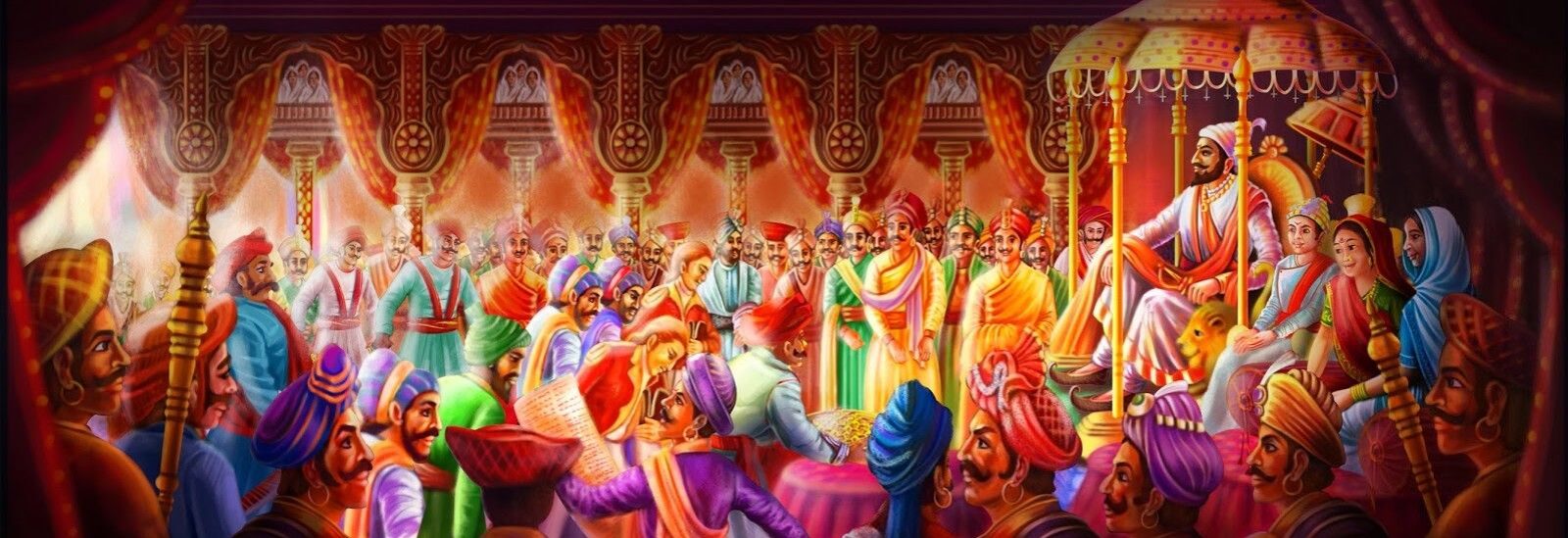Continue reading from Part XVII
The government levied taxes in two ways, one as a grade of land and two as a crop harvested. The farmer who cultivates the fallow land and harvests the crop will be exempted from tax for the first five years. In the next few years the 1/8 part of the tax is taken, then the 1/6, 1/4, 1/2 part of the tax respectively taken after the particular intervals of the years and then the tax should be taken from him like other cultivators. Maharaj had protected the farmers from many difficulties.
It was announced by the government that,
‘जो कोणी बांध बंदिस्ती करील व नवीन खार जमीन पिकास आणील त्यास पहिली काही वर्षे माफी देण्यात येईल, नंतर एकरी चार आणे महसूल घेण्यात येईल.’
Translation:
Whoever prepare a dam and brings the salted land newly under cultivation will be exempted from the tax for the first few years, after which a revenue of four annas per acre will be collected.
Shivaji Maharaj had ordered the recovery officers to store the recovered grain properly and sell it at the right time. Also, farmers should not be pressed for arrears. Recover from citizens/farmers should be done according to the agricultural income and the type of crop. Maharaj used to provide financial assistance to the farmers as compensation for the losses caused by natural calamities like drought, flood, shortage of essential commodities and military movements. He was always striving for the welfare of farmers and agricultural reform. Shivaji Maharaj used to protect the peasants even from the tyrannical levies of the hereditary Vatandari officers.
As much as the damage caused in horticulture due to storms was monitored, the farmers were given exemptions. Also, if the field was damaged due to dry or wet drought, the same amount of exemption was given to the farmer after this inspection. Maharaj used to call it ‘Ajmaas Pahani’ or ‘Kalit Pahani’ when government officials used to check the amount of collection at the time of crop preparation. Due to these losses, the relief to be given to the farmer was determined on the basis of the previous year’s collection of that crop. A fund called ‘Bijahurda’ is reserved by the government to provide agricultural implements, bullocks, seeds etc. to the farmers and it is given to the clan during the sowing season. This clan used Bijahurda to fertilize the barren land of village and encourage the farmers. The land was measured to determine the tax. These measurements were done by ‘Mir Jumale method’ and ‘Malik Ambar method’ of land measurement. (The meaning or description of these methods is not yet known to me. I will update the same in this blog, as and when I got knowledge about it.) The cost of land survey was taken from the village. The land measuring workers were paid monthly wages. Villagers were given the Sanad of Shetkari and their farm was mentioned in it and the Sanad was called ‘Jameenzaadaa’ ‘जमीनझाडा’. If the citizen does not agree with the land measurement and he applies to the government for land measurement again, then the land measurement should be done again and even if the citizen not liked the new land measurement, then the land measurement should be taken as witnesses by the government officials and knowledgeable people of the citizen and it will be considered as final. There were orders of the Maharaj that if the crop of the farmer fell short, he should be given an exemption without forcing him to pay the same amount as the previous year. Mamaledars and Kamavisdars were important elements of the government machinery in the matter of revenue and had the power to levy extra permissible levies.
Land in Konkan is of two types namely Jiraayat (non-irrigated) and Bagayat (irrigated). At that time, government officials with the help of pargana officials, village officials and villagers used to determine the land revenue every year.
goto Part I, Part II, Part III, Part IV, Part V, Part VI, Part VII, Part VIII, Part IX, Part X, Part XI, Part XII, Part XIII, Part XIV, Part XV, Part XVI


Pingback: Revenue System (Part XVII- Other Revenue 2) – Chatrappati Blogging
Pingback: Revenue System (Part XII – Direct Taxes) – Chatrappati Blogging
Pingback: Revenue System (Part I) – Chatrappati Blogging
Pingback: Revenue System (Part XIII – Indirect Tax) – Chatrappati Blogging
Pingback: Revenue System (Part XVI- Other Revenue) – Chatrappati Blogging